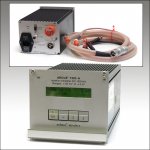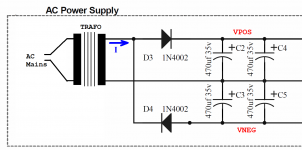Finally got round to reading this article. First off, have to say I don't know why this album has so much press. It doesn't do anything for me compared to some of their earlier stuff. But if a DR of 9 is considered good these days we've really lost the plot. 'Ace of spades' by motorhead is DR11 !
I'm off to fondle some mono Deccas...
Finally got round to reading this article. First off, have to say I don't know why this album has so much press. It doesn't do anything for me compared to some of their earlier stuff. But if a DR of 9 is considered good these days we've really lost the plot. 'Ace of spades' by motorhead is DR11 !
I'm off to fondle some mono Deccas...
I'm kinda wondering what Robert is going to say when I use the Wipers to audition pre-amps, sorry Beatles NFW. https://www.youtube.com/watch?v=YaUzYISKKAI
Amen Brother!
The 7A22 schematic + service manual are online; I counted only twenty nine transistors (considering a dual device to count as two transistors). How difficult could it be to slap together a quick clone??
The schematic doesnt tell the whole story. Lots of implementation details. I have a 7a22 and both the dc and ac current probes. The 7a22 really needs the special probes to get the full dynamic range and cmrr.
A 7603 is not expensive. The 5000 versions are pretty cheap and the bandwidth is only 1 MHz so you don't need a fast mainframe.
Tek "ported" the 7a22 that actually started as 1 series plugin and to the external box. The bandwidth switches and some other features were dropped.
Tek had other differential plugins including one with a dedicated diff probe with 100 MHz bandwidth but less gain.
I would just look at the radiated field with a coil. Its the same energy getting into everything. A small coil or even a wire from tip to ground in a probe is excellent for finding and tuning these issues. No real need for exotic diff preamps.
Sent from my LG-H811 using Tapatalk
Oh heavens! Well, just no Sunn O))) ok? 😉I'm kinda wondering what Robert is going to say when I use the Wipers to audition pre-amps, sorry Beatles NFW. https://www.youtube.com/watch?v=YaUzYISKKAI
The schematic doesnt tell the whole story. Lots of implementation details. I have a 7a22 and both the dc and ac current probes. The 7a22 really needs the special probes to get the full dynamic range and cmrr.
A 7603 is not expensive. The 5000 versions are pretty cheap and the bandwidth is only 1 MHz so you don't need a fast mainframe.
Tek "ported" the 7a22 that actually started as 1 series plugin and to the external box. The bandwidth switches and some other features were dropped.
Tek had other differential plugins including one with a dedicated diff probe with 100 MHz bandwidth but less gain.
I would just look at the radiated field with a coil. Its the same energy getting into everything. A small coil or even a wire from tip to ground in a probe is excellent for finding and tuning these issues. No real need for exotic diff preamps.
Sent from my LG-H811 using Tapatalk
I did however score this: a sort of ac multimeter with ranges from 10mV to 3kV (!) full scale, 300kHz bw, and a common mode range of 3kV+ !!
A scope output at nominal 10V fsd is also present.
Eat your hart out guys!

Jan
Attachments
But what does it sound like? 😛
I dunno. These days I watch my music on my scope. Have stopped connecting up the speakers - can't stand the racket! 😎
Jan
I did however score this: a sort of ac multimeter with ranges from 10mV to 3kV (!) full scale, 300kHz bw, and a common mode range of 3kV+ !!
A scope output at nominal 10V fsd is also present.
Eat your hart out guys!
Jan
So... got a good price from Helmut 🙂 I like it
If you don't want to pay for 7A22 differential plug-in and a 7000 series mainframe scope, you do have the option to spend more time and less money. Test your Vendetta Research "transient perfect crossover" using a 5 MHz scope, a temporary installation of 1N4003 diodes, and linear systems theory. Cost is less than five Euros since you already own a scope. You'll be viewing sub-200 kHz waveforms {see post # 90664} and counting graticule divisions. Undergraduate stuff. The entire 60 minute procedure is quite a bit easier than bodging in an attachment loop for a $2000 current probe.
Well one of my std tests is the 12" of 'killed by death' .
I try to avoid std's.
but 12 inches is certainly impressive.
John
why not make a few 50 milliohm non inductive and non coupling rseistors? surely 50 or 100 milliohms isn't a deal breaker, no?
John
John
The problem is ground. The branch whose current you want to measure, isn't grounded. So a current sense resistor isn't grounded, and you need a 7A22 differential amplifier to measure the voltage across it.why not make a few 50 milliohm non inductive and non coupling rseistors? surely 50 or 100 milliohms isn't a deal breaker, no?
why not make a few 50 milliohm non inductive and non coupling rseistors? surely 50 or 100 milliohms isn't a deal breaker, no?
John
Like Cmicrotek does.
CMicrotek - Products
Jan
Question about the ringing power supply issue: Do artifacts from the ringing exhibit themselves in some particular way in standard distortion analysis measurements?
The problem is ground. The branch whose current you want to measure, isn't grounded. So a current sense resistor isn't grounded, and you need a 7A22 differential amplifier to measure the voltage across it.
Or at least a good IA.
Like what jan linked.
John
Yep, to display the waveform of the current "I" on an oscilloscope, just splice your current sensing resistor in series, then differentially measure the voltage across that resistor using an IA. Required bandwidth is under 1 Megahertz and required gain is under 100X. I'll let someone else calculate the required CMRR @ 100 kHz.Or at least a good Instrumentation Amplifier.
_
Attachments
Missed ya John 🙂
Hey there. Been getting back intuit.. How's your offspring likin the job?
John
- Status
- Not open for further replies.
- Home
- Member Areas
- The Lounge
- John Curl's Blowtorch preamplifier part II

